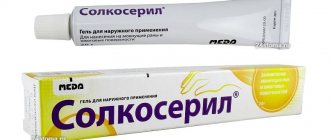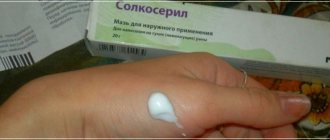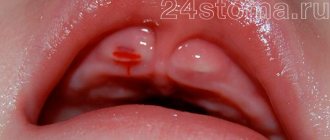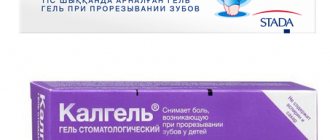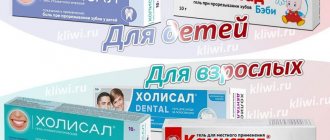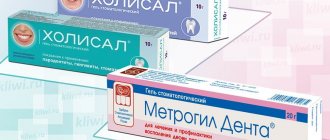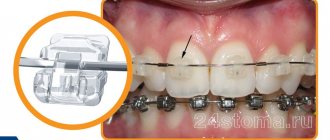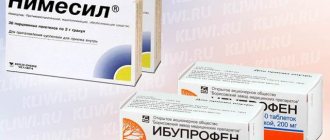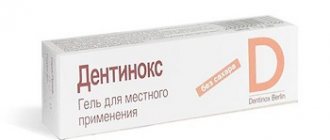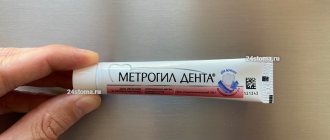Instructions for use
Teething in a child is a natural physiological process, the beginning of which many parents look forward to. The first baby teeth begin to appear at 6-8 months, and by 2.5-3 years all 20 teeth usually grow in. For many babies, this period is quite painful and difficult. In rare cases, teething does not show any symptoms, and parents discover new teeth by accident. It is a natural desire to protect your child from pain and discomfort. Fortunately, when teething, you no longer need to resort to traditional medicine methods and spend sleepless nights calming the baby. Modern dental products come to the rescue when teething in children, which have an analgesic and anti-inflammatory effect.
Kalgel or Cholisal - which is more effective?
During teething in children, the likelihood of infection of the gum mucosa increases. To ease the pain and burning sensation, the baby begins to chew objects that he can reach. During the day, pathogenic bacteria and pathogenic fungi settle on toys or books. After their penetration into the oral cavity, there is a risk of an inflammatory process. The use of Cholisal or Kalgel will help prevent such negative developments. They are characterized by the following therapeutic properties:
- relief of inflammation and swelling of the gums;
- elimination of pain of any intensity;
- preventing the spread of infection to healthy areas of the oral cavity.
Cholisal fights inflammation much more effectively due to its active ingredients. They quickly destroy pathogenic microorganisms and disinfect mucous membranes. Kalgel relieves pain, burning, cutting and itching well. But it is used more for the prevention of bacterial and fungal infections. And to eliminate it, more powerful antimycotic and antimicrobial agents are needed.
Rules for choosing a dosage form
Kholisal is characterized by a significantly larger number of contraindications. The likelihood of developing side effects from using Kalgel is significantly lower. The dentist assesses the stage of the inflammatory process and the number of complications that have arisen. What is better for a child - Cholisal or Kalgel:
- Both gels eliminate pain within the first minutes after application to the gum mucosa;
- Kalgel is less toxic to the baby’s body;
- Cholisal has a wider spectrum of antimicrobial action;
- drugs are quickly absorbed by mucous membranes, which reduces the likelihood of ingestion;
- Cholisal better eliminates swelling, which increases pain.
When choosing a gel to relieve pain in the gums, the doctor is guided by the age of the young patient. The general state of health and the presence of diseases in the anamnesis must be taken into account.
Differences
Dental gels differ from each other not only in composition and range of applications. What else is the difference between Kalgel and Cholisal:
- Kholisal has a more multifaceted therapeutic effect;
- Kids like Kalgel more in terms of taste;
- Dental gels have different mechanisms of pharmacological action.
For a small child, Kalgel is a safer drug.
If dental gel is accidentally swallowed, digestive and peristalsis disorders occur in rare cases. Kholisal has one significant drawback. It contains anise oil, which determines the taste and smell of the drug. After applying the product to the gums, increased salivation occurs. Human saliva contains enzymes that have medicinal properties:
- bactericidal;
- antifungal;
- antiseptic.
By adding anise oil, manufacturers enhanced the therapeutic effect of the dental drug. But small children do not have time to swallow saliva, they choke and are very frightened by this condition. This can negatively affect falling asleep and disrupt feeding patterns.
How is stomatitis treated in children?
Every parent should understand that there is no single algorithm for treating stomatitis in a child. As we have already found out, many factors can contribute to the onset of inflammation. This means that treatment of stomatitis in a child must begin with eliminating the main cause that caused inflammation of the oral mucosa. Only a doctor can select complex therapy, based on the symptoms of the disease, the child’s age and other individual characteristics. Treatment usually includes taking medications, using local remedies for stomatitis in children (gels, ointments, applications), maintaining good hygiene, diet and sleep. Depending on the type of stomatitis, various medications are prescribed. Thus, for allergic stomatitis, antihistamines may be recommended, for herpetic stomatitis - antiviral drugs, and for aphthous stomatitis - antibiotics. It is strongly not recommended to resort to self-treatment, because the wrong choice of medication can aggravate the child’s condition.
Description of drugs
Cholisal is a transparent jelly-like substance without a distinct taste with a faint aroma of anise. Kalgel is a colorless mass with a gel consistency, a pleasant sweet taste and herbal odor. The drugs have advantages over antiseptic solutions and ointments:
- have an analgesic effect for several hours;
- do not require frequent use;
- During treatment, the baby’s diet is not disrupted.
Applying medications to your baby's gums before bed allows him to sleep peacefully all night without feeling pain or itching. Their use also becomes an excellent prevention of stomatitis by strengthening local immunity.
pharmachologic effect
Medicines exhibit the same activity - analgesic, disinfectant, anti-inflammatory.
They have the ability to destroy bacteria, yeast-like fungi and even some viruses. The drugs effectively relieve swelling by improving microcirculation in inflamed areas. But the mechanisms of such an effect differ somewhat between gels:
- Holisal. Blocks cyclooxygenase, prevents the penetration of neutrophils and macrophages into inflammatory foci. Shows antimicrobial and antibacterial activity. Reduces the sensitivity of nerve endings, eliminating pain;
- Kalgel. Blocks sodium channels, which causes inhibition of nerve conduction. Prevents the active growth and reproduction of pathogenic microorganisms due to its antiseptic effect. Cools gums, instantly reducing pain and itching.
Dental gels improve blood circulation in tissues affected by inflammation. The supply of oxygen, nutrients and biologically active substances to the cells increases. By accelerating metabolic processes, damaged tissues heal quickly.
Composition and release form
Gels for treating gums are completely different in the composition of active and auxiliary ingredients. The active ingredients of Cholisal are choline salicylate, cetalkonium chloride, Kalgel - lidocaine hydrochloride and cetylpyridinium chloride. Dental preparations contain auxiliary components. They are necessary both to form the gel base and to ensure maximum absorption. What is the difference between Kalgel (365 rubles) and Kholisal (375 rubles) in composition:
- Cholisal: methyl parahydroxybenzoate, glycerin, hyethellose, propyl parahydroxybenzoate, ethyl alcohol, distilled water, anise oil;
- Kalgel: sorbitol, ethanol, hyaetellose, macrogol, sodium saccharinate and citrate, xylitol, glycerin, levomenthol, citric acid, caramel and herbal flavors, water.
The drugs are produced in aluminum tubes, packaged in 10.0 g units. Secondary packaging is cardboard boxes with attached instructions for use.
Instructions for use
If teething is not accompanied by inflammation of the oral mucosa, then both drugs can be used. They exhibit pronounced analgesic and distracting activity. After applying dental gels, their ingredients do not penetrate into the bloodstream. Therefore, the development of systemic side effects is completely excluded.
Kalgel - instructions for use
Indications and contraindications
The drug Kalgel is aimed at use in pediatrics, therefore it contains more flavorings and flavoring additives. Cholisal is used not only for teething. It is included in therapeutic regimens for diagnosing periodontitis, gingivitis, and stomatitis. It is used for any inflammatory diseases of the oral mucosa in adults. What is better for stomatitis - Cholisal or Kalgel:
- both drugs disinfect the mucous membranes of the oral cavity;
- Cholisal is more active against pathogenic microorganisms.
Dental gels are good at eliminating both fungal and bacterial infections. Contraindications to their use are hypersensitivity to the ingredients.
Dentists prescribe Kalgel to children from 5 months. One of the contraindications for Cholisal is age under 12 months. It is not used in the treatment of pregnant women, since its safety has not been confirmed by clinical trials. The drug is not prescribed to patients with severe heart, liver and kidney diseases, arterial hypotension.
Side effects
But doctors recommend not using Cholisal in the treatment of children under 3 years of age due to the provocation of excess salivation.
When treated with dental products, a burning and tingling sensation sometimes occurs. It disappears after 3-5 minutes. In rare cases, an allergic reaction develops - swelling and a small rash.
Directions for use and doses
The ingredients included in dental products ensure rapid absorption of active substances. The gels are securely held on the gums and do not enter the stomach when swallowing saliva. A single dose is approximately 0.5 cm of a strip of product squeezed out of the tube.
For pain relief, it is enough to apply the drug to the gums 3-4 times a day, lightly rubbing. You should first remove the resulting plaque with a sterile cloth. The duration of treatment with Cholisal and Kalgel is determined by the doctor, taking into account the speed of teething and the number of teeth.
Prevention of stomatitis in children
Prevention of stomatitis comes down to following basic hygiene rules. It is necessary to teach your child to regularly wash their hands and brush their teeth twice a day. In this case, the brush and paste should be selected in accordance with his age. If the child is still too small, then parents should help with hygiene procedures. It is also recommended to periodically wash toys, disinfect pacifiers and bottles, and keep the house clean.
Learn about other oral diseases
Scurvy Oral thrush Pathological tooth wear Stevens-Johnson syndrome
Reviews
Marina, Voronezh: After a year, my daughter began to erupt several teeth at once. The doctor recommended using Kalgel or Cholisal. Just in case, I bought two drugs at once. They had the same effect - there was no difference in pain relief.
Natalya, Perm: My son’s temperature jumped several times during the day due to teething. The pediatrician prescribed Cholisal and Nurofen suspension. The medications helped a lot. I almost didn’t use Nurofen, so the dental gel worked immediately.
When to suspect teething
The first teeth - the lower central incisors - can begin to erupt as early as three months, but in most cases their time comes at the age of 6-7 months.
Starting from this age, when symptoms appear that make it possible to suspect a cold or intestinal infection (we will talk about them later), first of all you should think about the fact that it could be teething and how to help the baby. Only after providing pain relief assistance, call a doctor and examine the child as prescribed. Teething occurs approximately according to this schedule:
| What kind of teeth | Time of eruption of baby teeth (months) | |
| Incisors | Lower central | 6–7 |
| Upper central | 8–9 | |
| Upper side | 9–11 | |
| Lower side | 11–13 | |
| Indigenous | The first (immediately behind the fangs) upper | 12–15 |
| First top | 12–15 | |
| Second (large) bottom | 24–30 | |
| Second top | 24–30 | |
| Fangs | Upper | 16–18 |
| Lower | 18–20 | |
It is especially important to know how to numb teething teeth in the following cases:
- at the age of 16–20 months, when the fangs grow: these are the teeth whose eruption is worst tolerated by children;
- if the first incisors began to appear closer to 11–13 months: the baby may have problems with the jaw bones, so any teeth he develops will be very painful;
- if the child was already born with defects of the dental-jaw system.
